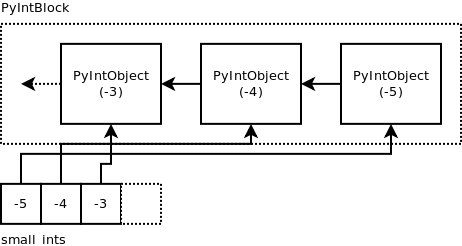Pytorch Tensor的统计属性实例讲解
1. 范数
示例代码:
import torch a = torch.full([8], 1) b = a.reshape([2, 4]) c = a.reshape([2, 2, 2]) # 求L1范数(所有元素绝对值求和) print(a.norm(1), b.norm(1), c.norm(1)) # 求L2范数(所有元素的平方和再开根号) print(a.norm(2), b.norm(2), c.norm(2)) # 在b的1号维度上求L1范数 print(b.norm(1, dim=1)) # 在b的1号维度上求L2范数 print(b.norm(2, dim=1)) # 在c的0号维度上求L1范数 print(c.norm(1, dim=0)) # 在c的0号维度上求L2范数 print(c.norm(2, dim=0))
输出结果:
tensor(8.) tensor(8.) tensor(8.) tensor(2.8284) tensor(2.8284) tensor(2.8284) tensor([4., 4.]) tensor([2., 2.]) tensor([[2., 2.], [2., 2.]]) tensor([[1.4142, 1.4142], [1.4142, 1.4142]])
2. 一些常用操作
(1)均值、累加、最小、最大、累积
示例代码:
b = torch.arange(8).reshape(2, 4).float() print(b) # 均值,累加,最小,最大,累积 print(b.mean(), b.sum(), b.min(), b.max(), b.prod()) # 打平后的最小最大值索引 print(b.argmax(), b.argmin())
输出结果:
tensor([[0., 1., 2., 3.], [4., 5., 6., 7.]]) tensor(3.5000) tensor(28.) tensor(0.) tensor(7.) tensor(0.) tensor(7) tensor(0)
注意:上面的argmax、argmin操作默认会将Tensor打平后取最大值索引和最小值索引,如果不希望Tenosr打平,而是求给定维度上的索引,需要指定在哪一个维度上求最大值索引或最小值索引。
比如,有shape=[4, 10]的Tensor,表示4张图片在10分类的概率结果,我们需要知道每张图片的最可能的分类结果:
a = torch.rand(4, 10) print(a) # 在第二维度上求最大值索引 print(a.argmax(dim=1))
输出结果:
tensor([[0.0711, 0.5641, 0.7945, 0.6964, 0.3609, 0.5817, 0.1705, 0.6913, 0.1263, 0.8346], [0.0810, 0.0771, 0.1983, 0.0344, 0.1067, 0.9591, 0.8515, 0.3046, 0.0491, 0.1291], [0.3527, 0.2676, 0.9859, 0.2656, 0.1985, 0.3759, 0.8221, 0.3571, 0.5340, 0.7759], [0.0969, 0.3954, 0.5478, 0.3543, 0.8253, 0.9291, 0.4960, 0.4390, 0.3780, 0.5858]]) tensor([9, 5, 2, 5])
(2)直接使用max和min配合dim参数也可以获得最值索引,同时得到最值的具体值:
print(c.max(dim=1))
输出结果:
(tensor([0.9589, 1.7394, 1.3448, 2.2079]), tensor([2, 2, 5, 7]))
(3)使用keepdim=True可以保持应有的dim,即仅仅是将求最值的那个dim的size变成了1,返回的结果是符合原Tensor语义的。
print(c.argmax(dim=1, keepdim=True)) print(c.max(dim=1, keepdim=True))
输出结果:
tensor([[2], [2], [5], [7]]) (tensor([[0.9589], [1.7394], [1.3448], [2.2079]]), tensor([[2], [2], [5], [7]]))
(4)取前k大/前k小/第k小的概率值及其索引
使用topk代替max可以完成更灵活的需求,有时候不是仅仅要概率最大的那一个,而是概率最大的k个。如果不是求最大的k个,而是求最小的k个,只要使用参数largest=False,kthvalue还可以取第k小的概率值及其索引。
示例代码:
# 2个样本,分为10个类别的置信度 d = torch.randn(2, 10) # 最大概率的3个类别 print(d.topk(3, dim=1)) # 最小概率的3个类别 print(d.topk(3, dim=1, largest=False)) # 求第8小概率的类别(一共10个那就是第3大) print(d.kthvalue(8, dim=1))
输出结果:
(tensor([[2.0692, 1.6490, 0.9526], [1.5983, 1.5737, 1.5532]]), tensor([[6, 3, 5], [8, 1, 2]])) (tensor([[-1.0023, -0.6423, 0.0655], [-1.2959, -1.1504, -0.9859]]), tensor([[4, 0, 2], [0, 5, 3]])) (tensor([0.9526, 1.5532]), tensor([5, 2]))
(5)比较操作
示例代码:
import torch a = torch.randn(2, 3) b = torch.randn(2, 3) print(a) print(b) # 比较是否大于0,是对应位置返回1,否对应位置返回0,注意得到的是ByteTensor print(a > 0) print(torch.gt(a, 0)) # 是否不等于0,是对应位置返回1,否对应位置返回0 print(a != 0) # 比较每个位置是否相等,是对应位置返回1,否对应位置返回0 print(torch.eq(a, b)) # 比较每个位置是否相等,全部相等时才返回True print(torch.equal(a, b), torch.equal(a, a))
输出结果:
tensor([[-0.1425, -1.1142, 0.2224], [ 0.6142, 1.7455, -1.1776]]) tensor([[-0.0774, -1.1012, -0.4862], [-0.3110, -0.2110, 0.0381]]) tensor([[0, 0, 1], [1, 1, 0]], dtype=torch.uint8) tensor([[0, 0, 1], [1, 1, 0]], dtype=torch.uint8) tensor([[1, 1, 1], [1, 1, 1]], dtype=torch.uint8) tensor([[0, 0, 0], [0, 0, 0]], dtype=torch.uint8) False True
以上这篇Pytorch Tensor的统计属性实例讲解就是小编分享给大家的全部内容了,希望能给大家一个参考,也希望大家多多支持【听图阁-专注于Python设计】。

